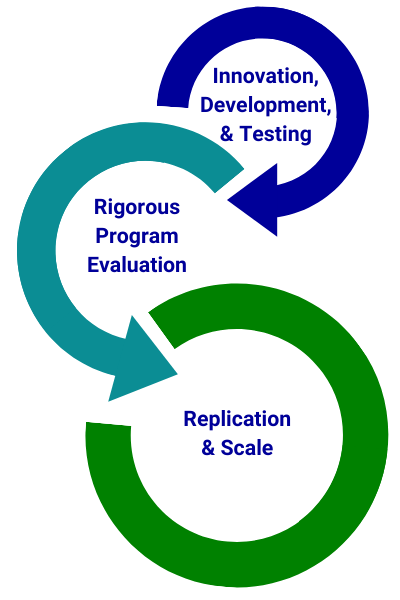Overview
Who Does the TPP Program Serve?
The TPP program serves adolescents ages 10-24 and the parents, caregivers, and youth-serving professionals supporting them.
The TPP program provides evidence-based programming, training and technical assistance, and building partnerships support to ensure the goals of the program are successfully achieved.
OPA collects data from its grant recipients about the number of youth served, program dosage, implementation quality, and grant recipients’ progress in forming partnerships and disseminating information.
Explore OPA's TPP Performance Measures Snapshots from recent years.
Adolescence is a developmental stage rich with opportunities for adolescents to think more critically and engage more deeply with the world around them. During this time, it is imperative for youth to learn how to make healthy decisions and form healthy relationships. The Office of Population Affairs’ (OPA) Teen Pregnancy Prevention (TPP) program is a national, evidence-based program that funds diverse organizations working to give adolescents, and the adults supporting them, the knowledge and tools needed to improve sexual and reproductive health outcomes and promote positive experiences, relationships, and environments to help our nation’s youth thrive.
With an annual budget of approximately $101 million, OPA invests in the replication of evidence-based TPP programs while developing and evaluating new and innovative approaches to help youth make healthy decisions that reduce sexual risk behavior and decrease sexually transmitted infections (STIs) and unintended teen pregnancy. The TPP program prioritizes a strength-based approach to serve communities and populations with the greatest needs and facing significant disparities.
Implement Effective Programs to Scale
OPA’s TPP program invests in community-driven strategies by identifying programs that work and supporting their implementation. The grants support local organizations throughout the nation to scale evidence-based teen pregnancy prevention programs and services that address community needs and context.
Grant recipients bring the community to this effort through the meaningful engagement of youth, parents, caregivers, and other key stakeholders in the design, implementation, and monitoring of the project. They also support active collaboration with a network of partners to increase awareness of and access to adolescent-friendly health services. This multi-faceted approach ensures high-quality programming and services are available to adolescents in communities with the greatest need.
Evaluate the Impact of New and Innovative Approaches
The TPP program also funds research and demonstration grants to foster innovation. Grant recipients develop, test, and evaluate new or improved interventions, approaches, and strategies to address gaps in the evidence base and improve sexual and reproductive health outcomes. They also evaluate for impact those approaches deemed most promising. These projects advance groundbreaking research and create innovative practices to ensure that OPA remains on the forefront of providing responsive programming for the nation’s youth.
 An official website of the United States government
An official website of the United States government

